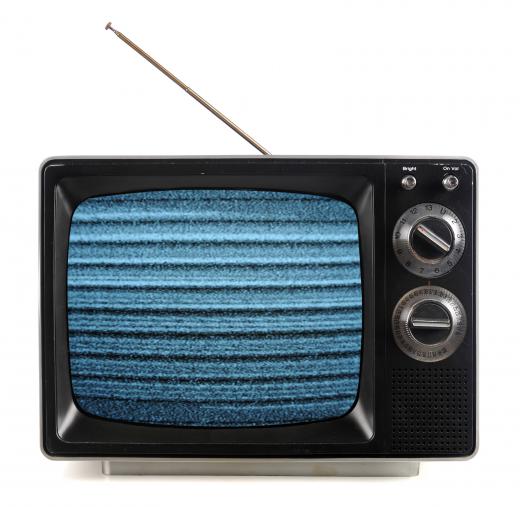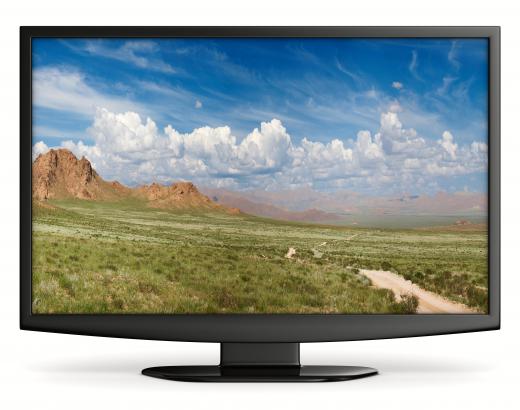What Is a Digital TV Signal?
A digital TV signal is one of the two main ways of transferring data and pictures via TV broadcast. Television broadcast stations send information out as analog or digital signals. These signals can be transmitted in a number of ways, such as over the air, cable or satellite, but they are always analog or digital. While both types of signals have advantages over the other, the benefits provided by digital dwarf those of analog. As a result of this clear technological advantage, a digital TV signal is legally required to send out TV broadcasts in many countries.
While the two types of TV signals do the same thing, they do it in very different ways. An analog signal looks like a wave, going up and down in an analogous manner to the original source of the transmission. Variations in aspects of the transmission cause variation in the wave, resulting in decodable information. A digital TV signal works like a computer transmission. A burst of binary data representing the broadcast is sent out and decoders on the other end read the data and create a picture based on the information.

This difference results in a handful of very important differences. The analog signal is the actual picture sent by the broadcaster while the digital TV signal is a binary copy. This means that interference in the analog transmission results in ghosting or static, but the picture is visible even when almost totally degraded. Digital transmissions need the vast majority of information in order to display. If the decoder doesn’t have a full set of binary code, it simply cannot display anything, resulting in the blue-screen effect common on modern televisions.

While this difference is important, it is the relative size of the two signals that makes the largest difference. If it were possible to view the two types of broadcast, one would appear as a wave with tall peaks and valleys while the other would appear as a narrow band of binary code. In many ways, this is the truth regarding their relative sizes. An analog signal is very large when compared to a digital signal.

Since the digital TV signal is so much smaller, it can do many things that the analog signal can’t. One of the most prominent abilities is the broadcast of High-Definition (HD) television, which has 1080p resolution. Analog signals only clocks in at Standard-Definition (SD), or 480p.
With the advent of streaming, which allows homes to watch tv without an antenna or cable, the quality of available programming goes significantly higher. Currently, the streaming standard for Ultra-High Definition is 4K, with services like Prime Video and Netflix being early adopters in converting their programming from HD to UHD.
Due to the increased availability in 5K resolution screens, we can expect an eventual move to that standard.

Along with the HD signal, the bandwidth is used for supplemental program information, such as channel name and line-up, subtitles and even multiple versions of the same channel, usually represented as channel X.1, X.2 and so on. Some broadcast stations send out data streams along with the TV signals that give specially-equipped receivers real-time weather, sports or traffic updates.
AS FEATURED ON:
AS FEATURED ON:














Discussion Comments
@Markerrag -- good advice and here's something to add to it. You can still watch digital programs on your old, analog set but you will need to buy a digital adapter. Those adapters don't cost much and can be a good alternative to breaking down and buying an expensive HD set if all you want to do is watch a few programs on a television you already own.
@Markerrag -- the solution to that problem is to get a good, outside antenna to pick up signals. That old roof antenna you used for years to pick up analog signals will usually do just fine.
If you really need to boost your signal, you can grab either an external signal booster (expensive) or one that you put in your house that boosts the power of signals coming through it (inexpensive).
This article hints at one of the main problems with broadcasting digital signals over the air -- unless you can pick up a very good signal, you will get no picture at all. With analog signals, you could still watch a show even if it wasn't coming in as well as you like.
Since analog TV is all but dead in the United States, what should people who want to watch over the air programming but don't get strong signals do?
Post your comments